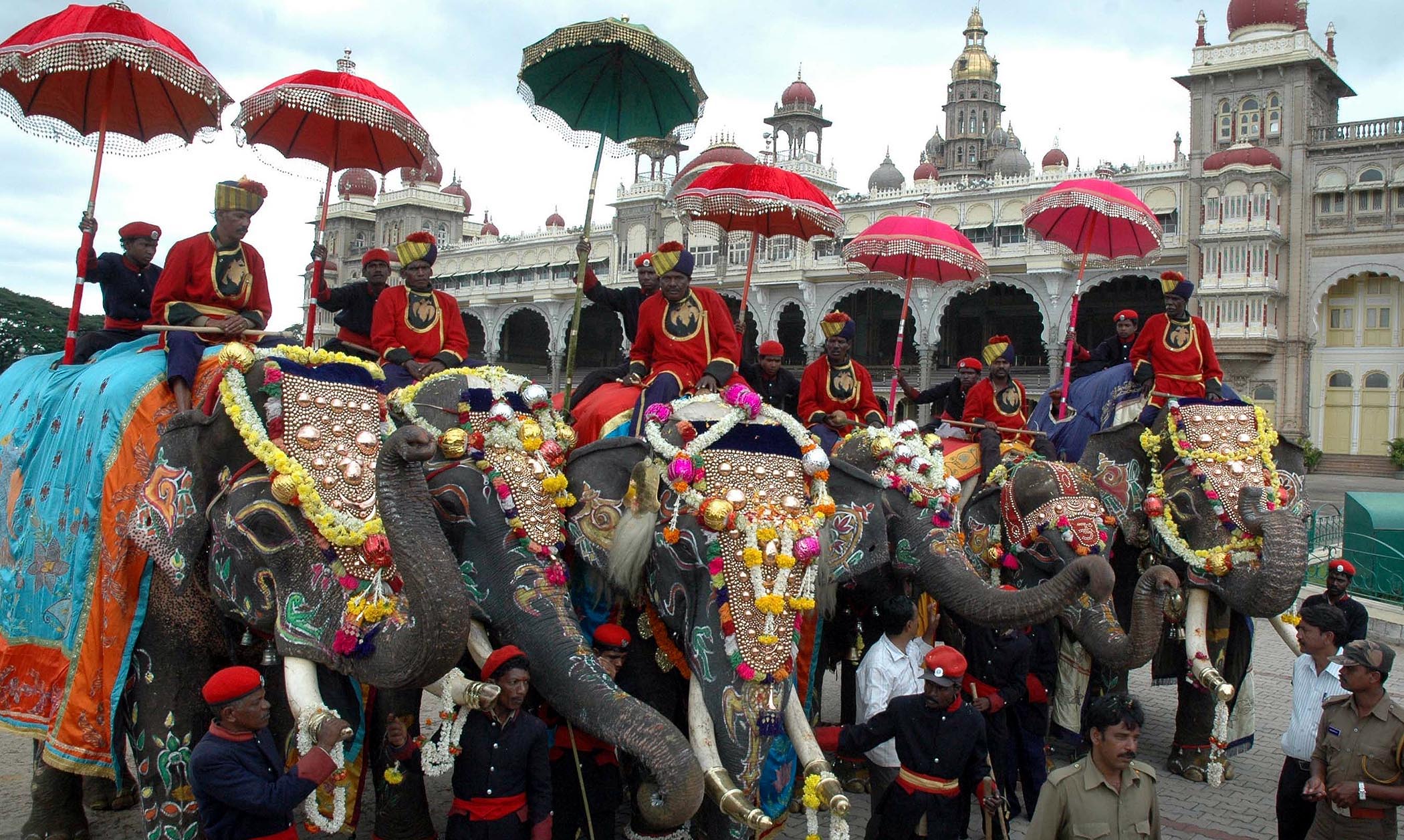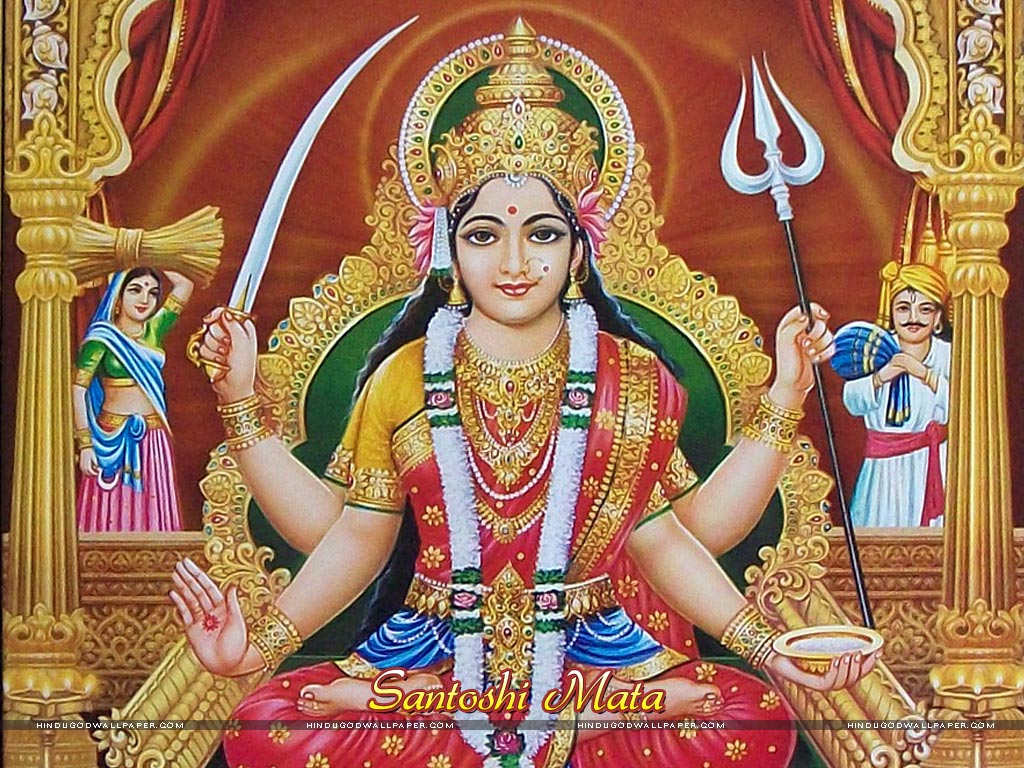Navaratri – The Many Hues and Forms of Dasara in India
Navratri is celebrated in different ways throughout India. The celebrations are as varied as the diverse cultures in the East, West, North and South of this great subcontinent. The Chaitra Navratri culminates in Ram Navami and the Sharad Navaratri culminates in Durga Puja and Dasara.1
In Bengal, this is the biggest festival of the year. Exquisitely crafted and decorated life-size clay idols of the Goddess Durga depicting her slaying the demon Mahishasura are set up in temples and private mandals. These idols are then worshiped for five days, starting from the 6th day and immersed in the river on the 10th day.
Fasting and Pujas in North India
During the Navaratri, in many parts of North India, devotees of Durga observe a fast and prayers are offered for the protection of health and prosperity. Devotees avoid meat, alcoholic drinks, grains, wheat and onion during this fast. Grains are usually avoided since it is believed that during the period of Navaratri and seasonal change, grains attract and absorb lots of negative energies from the surrounding and therefore there is a need to avoid eating anything which are produced from grains, for the purification of Navaratri to be successful. Navaratri is also a period of introspection and purification, and is traditionally an auspicious and religious time for starting new ventures.
During this vowed religious observance, a pot is installed (ghatasthapana) at a sanctified place at home. A lamp is kept lit in the pot for nine days. The pot symbolizes the universe. The uninterrupted lit lamp is the medium through which people worship the effulgent Adishakti, i.e. Durga.
Fertility Worship
In Punjab, Navratri is called Navratras or Naratey where the first seven days are for fasting. On the eighth day or ashtami, devotees break their fasts by calling young girls home and these girls are treated as the goddess herself. They are called “Kanjak Devis”. People ceremonially wash their feet, worship them and then offer food to the “girl-goddesses” giving them the traditional puri, halwa and chana to eat along with bangles and the red chunnis (scarves) to wear with a token amount of money as shagun. The ninth day is called Navami meaning the ninth day of this holy and pious period.
Another prevalent practice in Punjab is sowing pulses, cereals and other seeds on the first day of this festival in a pot which is watered for nine days at the end of which the seeds sprout. This pot is worshipped throughout the nine days. This custom is also indicative of fertility worship and is known as “Khetri”. These sprouted grains are submerged in water after saying prayers on Dasara. Similar Kanya Puja are part of the celebrations in West and South India as well.
In the temples of Goa, on the first day of Navratri, in some temples, a copper pitcher is installed surrounded by clay in which nine varieties of food grains are sown inside the sanctum sanctorum of the temple. All the nine nights are celebrated by presenting devotional songs, and through religious discourses. Later in the night the idol of the goddess is put in a specially-decorated colorful swing and for nine nights, this swing is swung to the tune of temple music, called ranavadya, by devotees who throng in large numbers to participate in the festival.
In Maharashtra, ghatasthapana is celebrated. An earthen pot is filled with water surrounded by clay in which food grains are sown and are allowed to sprout for nine days. Five stems of jowar (millet) are also placed over the pot. This arrangement is called the “Ghat”. The ladies worship the pot for nine days by offering rituals and a garland of flowers, leaves, fruits, dry-fruits, etc. with a naivedya, and water is offered in order to get the seeds sprouted.
In many families in Maharashtra, a woman from the Matang community is called and offered food and blessings are sought from her. She is considered as a form of the Goddess “Matangi”. This process is called patram bharane in Marathi
The Irrepressible Dandya Ras
In Western India, particularly in the state of Gujarat and the city of Mumbai, Navaratri is celebrated with the famous Garba and Dandiya Raas dance. People from all over Gujarat and even abroad come to participate in the nine-day celebration. Due to its grandeur and fervor, the Navratri Dandiya Ras has become more widespread and is celebrated in many other parts of the country as well, with the same color, vibrancy and vigor. It is also popular among Indian communities around the world including the UK, Canada, Malaysia, Singapore and USA.
Golus and Bathukamma in Tamil Nadu and Andhra Regions
In Tamil Nadu and Andhra Pradesh/Telangana people set up steps and place idols on them. This is known as Golu or Kolu. In the evening women from the neighborhood invite each other to visit their homes to view Kolu displays, they exchange gifts and sweets. Kuthuvilakku lamp is lit, in the middle of a decorated Rangoli, devotional hymns and shlokas are chanted. After performing the puja, the food items that have been prepared are offered to the Goddess and then to the guests. On the evening of Vijaydashami, any one doll from the Kolu is symbolically put to sleep and the Kalasa (sacred pot) is moved a bit towards North to mark the end of that year’s Navaratri Kolu. Prayers are offered to thank God for the successful completion of that year’s Kolu and with a hope of a successful one the next year. Then the Kolu is dismantled and packed up for the next year.
In Telangana people celebrate Bathukamma festival over a period of nine days. Here Navaratri is divided into sets of three days to adore three different aspects (Tridevi) of the supreme goddess or goddesses.
First three days: The goddess is separated as a spiritual force called Durga also known as Kali in order to destroy all our evil and grant boons.
Next three days: The Mother is adored as a giver of spiritual wealth, Lakshmi, who is considered to have the power of bestowing on her devotees inexhaustible wealth, as she is the goddess of wealth.
Last three days: The final set of three days is spent in worshiping the goddess of wisdom, Saraswati. In order to have all-round success in life, believers seek the blessings of all three aspects of the divine femininity, hence the nine nights of worship.
In Karnataka, it is Different!
In Karnataka, other than the unique celebration by the Mysuru royal family, the Mangaluru Dasara celebrated with pomp and show in the coastal city of Mangaluru, is growing in popularity each year. The Mangaluru Dasara is also referred to as Marnemi in the Tulu language of this region. The city is decorated with lights for the 10 days of the occasion. The tiger dance (hulivesha/pilivesha) and bear dance are the main attractions of its celebrations. Here young males form troops of five to ten. They are costumed like tigers and use a band with two or three drummers. They roam around the streets and houses. The tiger dance is performed to honor the goddess Sharada, whose favored animal is the tiger. Idols of ‘Navadurgas’ along with Mahaganapathi and Sharada are carried in the procession, augmented by flowers, decorative umbrellas, tableaux, bands, chende (cymbals) and traditional dances, folk dances, Yakshagana characters, Dolu Kunita (drum dance), gombe (dolls), karaga, and other traditional art forms.2
The Modern Take on Ayudha Puja
Ayudha (literally means weapons) Puja which falls on the 9th day, is celebrated with the worship of implements used in daily life such as computers, books, vehicles, or kitchen tools. The effort to see the divine in the tools and objects one uses in daily life is central to this celebration, so it includes all tools that help a family earn their livelihood. Knowledge workers go for books, pen or computers, farmers go for the plough and other agricultural tools, machinery for industrialists and cars/buses/trucks for the transportation workers—all are decorated with flowers and worshiped on this day invoking God’s blessing for success in coming years. Any new venture such as starting a business or purchasing a new household item on this day is bound to bring success and prosperity.
In Karnataka, vehicle/transport worship takes an exaggerated turn. Vehicles are decorated elaborately with plantain leaves, huge garlands and paper decorations, smudged with rice, vermillion and turmeric all over. Bus drivers outdo each other in the garish decorations of their vehicle, to such an extent that the front glass of the vehicle is no more visible, leading to road accidents!
Vijayadashami for Auspicious Beginnings3
The 10th day, Vijayadasami – is the most auspicious day and marks the end of the festivities. It is the day on which evil was finally destroyed by good. It marks a new and prosperous beginning. New ventures started on this day bring good fortune and prosperity and hence many entrepreneurs launch their start-ups on this day.
On Vijaya Dashami, books are ceremoniously taken out for reading and writing after performing Saraswati Puja. The day is therefore considered auspicious for initiating little children into writing and reading, with Vidyarambham. Tens of thousands of children are initiated into the world of letters on this day in Kerala and Maharashtra. Many teachers/schools in South India start teaching Kindergarten children from this day onwards.
References
- https://en.wikipedia.org/wiki/Dasara
- https://en.wikipedia.org/wiki/Mangalore_Dasara
- https://en.wikipedia.org/wiki/Vijayadashami
- https://en.wikipedia.org/wiki/Navratri
By – Vanaja Kumar











